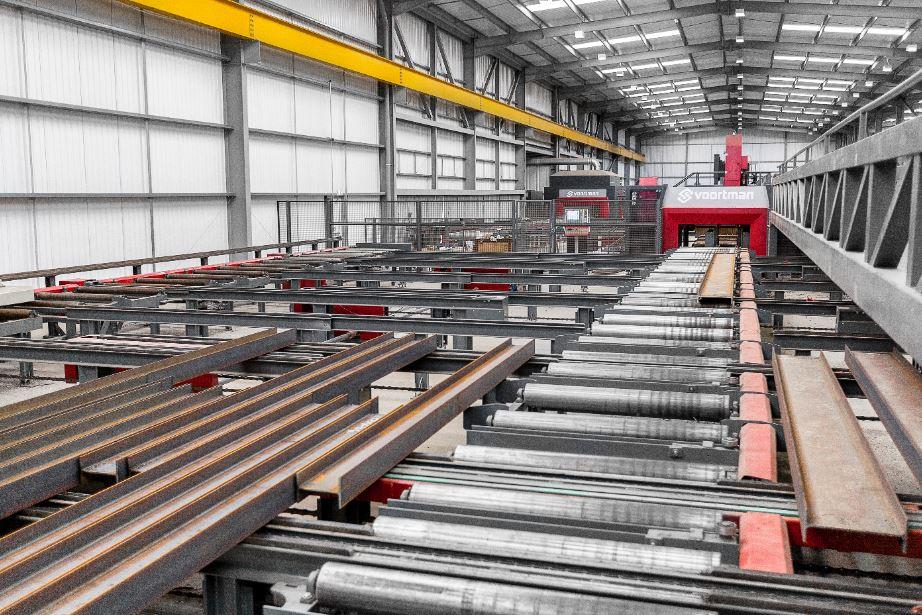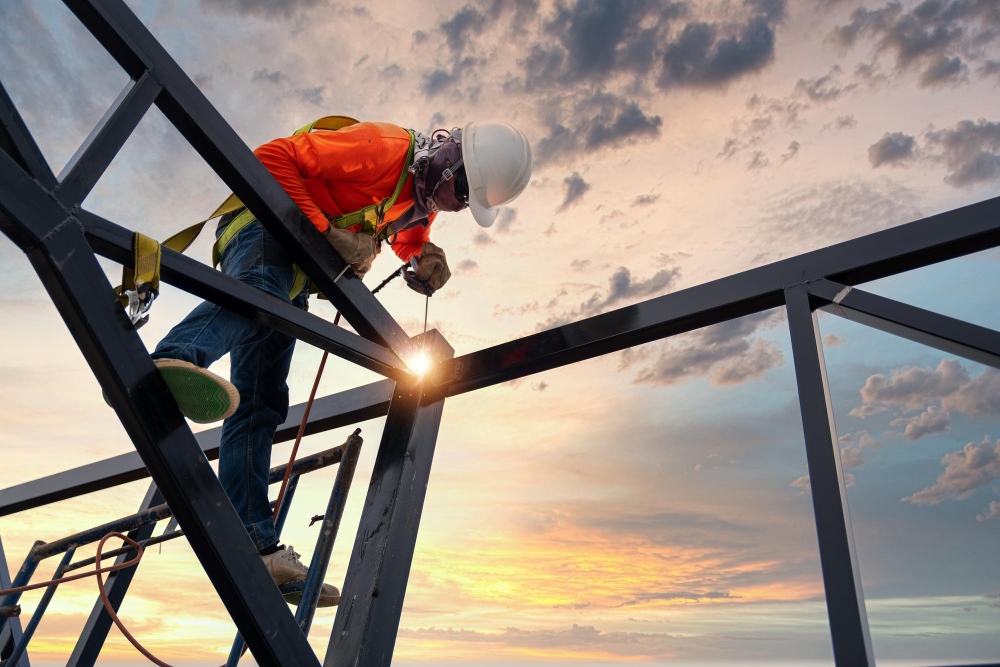Steel Fabrication Melbourne: Workmanship Meets Innovation
Steel Fabrication Melbourne: Workmanship Meets Innovation
Blog Article
Comprehensive Evaluation of Cutting-Edge Techniques in Steel Construction Market
As the steel construction industry continues to develop, the integration of cutting-edge methods has ended up being essential for staying competitive and satisfying the demands of contemporary production criteria. In this dynamic industry where modern technology plays a critical function, understanding the subtleties of these sophisticated methods is not simply an alternative but a requirement for those looking to create ahead in the ever-evolving globe of steel manufacture.
Laser Cutting Improvements
In the world of steel manufacture, laser cutting innovations have changed the accuracy and efficiency of steel shaping processes. By utilizing the power of concentrated laser beam of lights, producers can now attain unequaled degrees of accuracy when puncturing different kinds of steels. This technology allows complex designs to be performed with minimal product waste, making it an affordable solution for industries requiring high accuracy components.
Among the crucial advantages of laser cutting is its ability to handle a wide range of products, including stainless steel, light weight aluminum, and carbon steel, effortlessly. The procedure produces clean, burr-free sides, getting rid of the requirement for additional finishing steps. The non-contact nature of laser reducing reduces the danger of product contamination, resulting in greater quality end items.
Furthermore, laser reducing equipments can be programmed to make swift, accurate cuts, substantially decreasing production time contrasted to standard cutting approaches. This rate and accuracy make laser cutting specifically ideal for mass manufacturing environments where effectiveness is extremely important. As modern technology remains to advance, laser cutting is poised to play a significantly important duty in the steel fabrication market.

CNC Machining Innovations
The development of CNC machining modern technologies has actually ushered in a new period of precision and effectiveness in the steel construction sector. Computer Numerical Control (CNC) devices have actually revolutionized steel fabrication by providing exceptional precision and repeatability in the production procedure. steel fabrication melbourne. One of the vital technologies in CNC machining is the integration of advanced software systems that enable real-time tracking and adjustments, causing boosted productivity and quality assurance
In addition, the development of multi-axis CNC machines has enabled the construction of complex steel components with elaborate layouts that were previously challenging to produce. These makers can perform a variety of machining procedures, consisting of milling, exploration, transforming, and grinding, all with high levels of accuracy.
In addition, the incorporation of automation and robotics in CNC machining has streamlined production procedures, minimized preparations, and reduced the margin of error. This combination of cutting-edge technologies not only enhances effectiveness yet likewise guarantees constant quality throughout all made steel components. To conclude, CNC machining innovations continue to drive improvements in the steel construction industry, establishing new requirements for precision and productivity.
Automated Welding Technologies
Automated welding modern technologies have actually changed the steel manufacture sector, boosting efficiency and accuracy in the welding procedure. These cutting-edge modern technologies utilize computer-controlled systems to automate the welding procedure, bring about higher efficiency levels and boosted weld high quality. Among the vital benefits of automated welding is the ability to execute complex welds with constant accuracy, minimizing the chance of mistakes and remodel.
Robotic welding systems are at the forefront of automated welding modern technologies, providing unrivaled speed and accuracy. These systems can take care of a large range of welding jobs, from simple to elaborate, with convenience (Alpha reo). By using sophisticated sensing units and software, robot welders can adapt to variations in product and joint geometry, making certain an uniform and trusted weld
Furthermore, automated welding technologies enhance office safety and security by minimizing the exposure of human welders to dangerous fumes and intense heat. As the steel construction sector remains to evolve, including automated welding innovations will be vital for business seeking to stay competitive and meet the growing needs for premium bonded products.
Robotics Assimilation in Construction
Using robotic systems in manufacture processes has ended up being a crucial technique for enhancing effectiveness and precision in modern-day manufacturing settings. Robotics integration in steel fabrication uses a myriad of advantages, consisting of boosted productivity, enhanced quality assurance, and improved safety and security actions. These advanced robotic systems are outfitted with advanced sensors and programming capacities, permitting them to execute detailed tasks with a high level of precision and repeatability.
One of the key benefits of robotics combination in steel fabrication is the capability to automate repetitive tasks, such as material handling, cutting, welding, and setting up processes. This not just accelerates manufacturing cycles yet also lowers the review threat of human mistake, resulting in greater general item quality. In addition, robots can operate 24/7, significantly improving production outcome and meeting limited project deadlines.

3D Printing in Steel Manufacturing
Having actually revolutionized the steel fabrication sector with robotics assimilation, the expanding expedition of 3D printing in steel manufacturing is positioned to more development the world of modern manufacturing techniques. 3D printing, additionally known as additive manufacturing, supplies unmatched style freedom and intricacy, making it possible Full Report for the creation of complex steel frameworks that were formerly unattainable via traditional production approaches. By utilizing computer-aided layout (CAD) software application, manufacturers can specifically regulate the layer-by-layer deposition of steel material, resulting in parts with enhanced geometries and capabilities.
Among the key benefits of 3D printing in steel manufacturing is its capacity to reduce product waste dramatically. Unlike subtractive production processes where excess product is cut away, 3D printing only makes use of the essential amount of steel required for the final component. This effectiveness not only leads to cost financial savings however additionally aligns with lasting manufacturing methods by decreasing ecological influence.
Furthermore, 3D printing allows fast prototyping and personalization, allowing for the manufacturing of tiny sets of complex steel elements with brief lead times. As the technology remains to develop and become much more easily accessible, its combination into mainstream steel manufacture processes is expected to drive innovation and performance throughout the industry.
Verdict
To conclude, the steel manufacture sector has actually seen substantial advancements in strategies such as laser cutting, CNC machining, automated welding, robotics integration, and 3D printing. These cutting-edge technologies have transformed the way steel items are manufactured, causing boosted effectiveness, precision, and cost-effectiveness. Proceeded investment in these innovative strategies is crucial for the sector to stay affordable and meet the demands of modern-day production processes.
As the steel fabrication market continues to advance, the integration of advanced techniques has actually come to be necessary for staying affordable and meeting the demands of modern manufacturing standards.One of the vital benefits of laser cutting is its capacity to handle a large variety of materials, including stainless steel, aluminum, and carbon steel, with simplicity.Automated welding modern technologies have actually revolutionized the steel construction market, improving performance and precision in the welding process.Having actually changed the steel construction sector with robotics combination, the burgeoning exploration of 3D printing in steel manufacturing sites is poised to additional advancement the world of modern-day production techniques.In conclusion, the steel manufacture sector has actually seen substantial developments in methods such as laser cutting, CNC machining, automated welding, robotics assimilation, and 3D printing.
Report this page